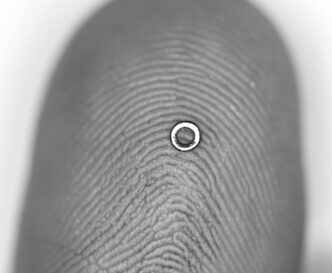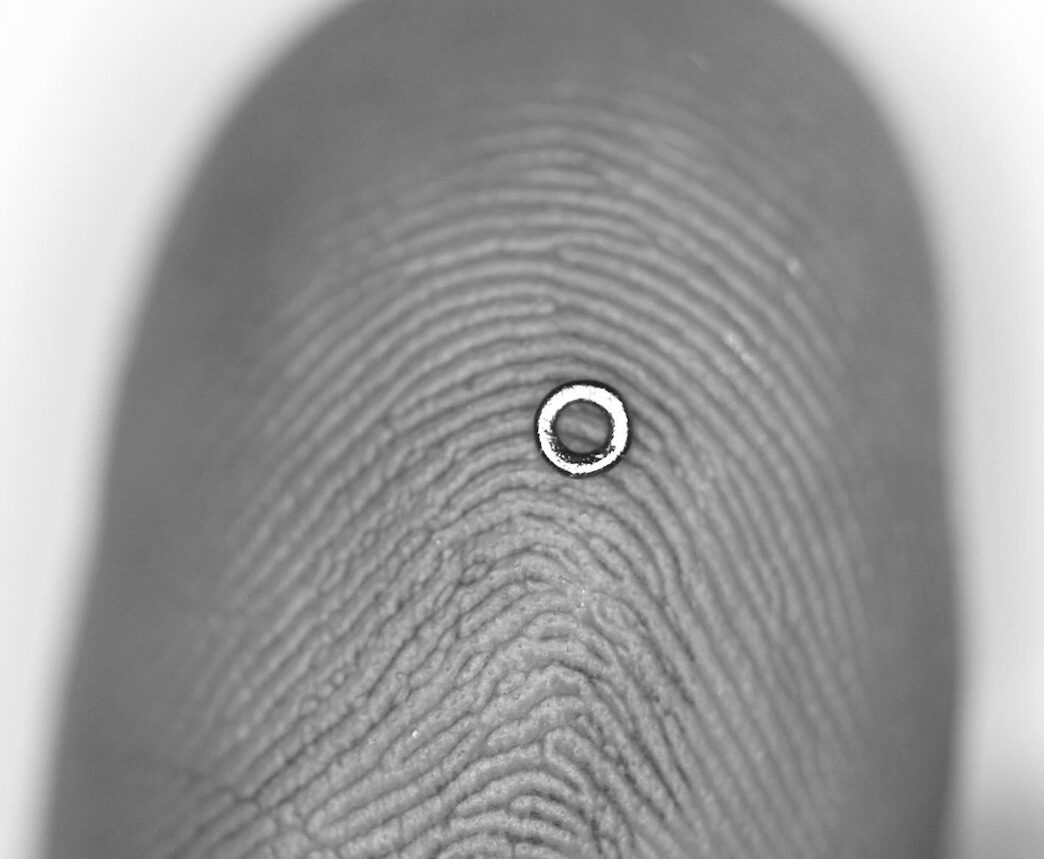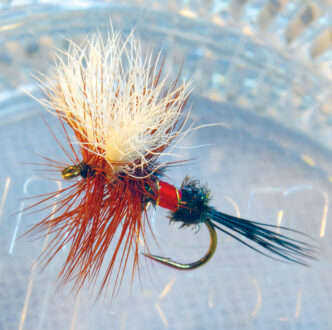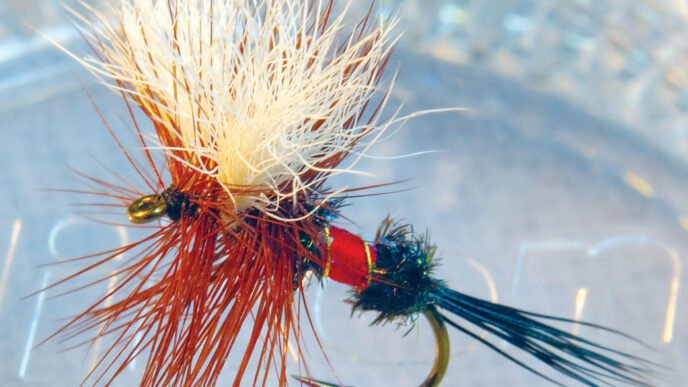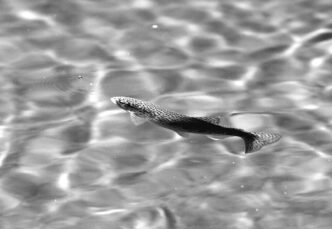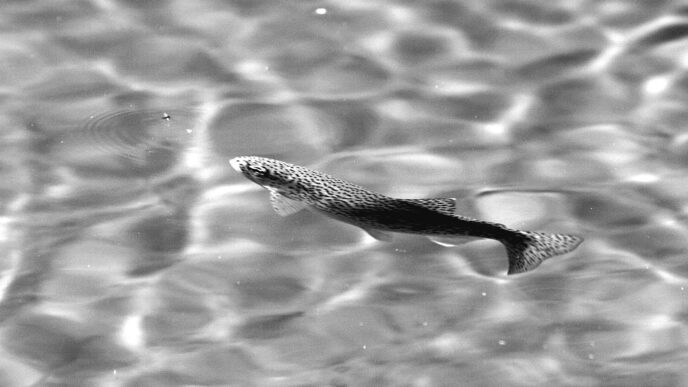I held the mug at eye level and watched steam from the coffee meld with wisps of fog rising from the twinkling, frost-encrusted tules. It was a cheap psychedelic thrill. Every now and then I would break the spell to glance down at the tuft of wool floating quietly on the glassy water. Tendrils of ice were climbing up the wool fibers. A single goose flew frantic laps above the lake and incessantly called for its lost mate. Midge larvae were wriggling just beneath the water’s surface. Perhaps they sensed the lake was getting close to freezing and were hoping to drift over deeper water, where they could descend into the safety of cold, but not frozen mud. Little red worms were dancing for their lives at the break of day, a widowed goose was calling, and I was sipping coffee while waiting for a bite. Sometimes it isn’t the major events, but the collage of little things that create the richest experiences.
I had rigged a tuft of orange wool at the tip of the leader and along the leader had strung three naked red Gamakatsu hooks. The wisp of wool bobbed on the lake’s surface, as did the floating fly line. The leader, suspended between the wool and the floating line, held the hooks in trot-line fashion just beneath the film. It was as simple as it was effective.
Not too long ago, a fly-fishing rig was defined as a three-part system consisting of a fly line, a tapered leader, and a fly. Today, you can easily incorporate a dozen components into the system or remove parts altogether. As fly fishing has become increasingly complex and technical, it has also become increasingly removed from the traditional definition of fly fishing. That is neither a good thing or a bad thing. It is simply a thing.
Some nymph and streamer leaders have become simplified to the extreme. For decades, we agonized over and tweaked leader taper formulas that might allow us to turn over weighted flies with the same finesse as dry flies. Except for leader manufacturers, who have a vested interest in selling every possible permutation of leaders possible, I feel the collective fly-fishing community has come to accept that weighted flies, by virtue of being weighted, turn themselves over just fine without the need of a special taper. Not only do they turn over just fine, but they sink more quickly when the tippet is a uniform, relatively thin diameter, rather than a tapered leader that is resistant to sinking and readily pushed around by currents. My go-to high-stick leader “formula” is a short piece of 15-pound monofilament and single strand (perhaps 7 to 9 feet) of 4X or 5X tippet material, connected together with a tippet ring.
Tippet ring? Most fly fishers have never heard of a tippet ring, and even fewer yet have used one. Last summer, Lisa and I traveled throughout the West and went out of our way to visit as many fly shops as possible. Fewer than half carried tippet rings. I was dumbfounded. These little things have changed the way I fish, and over the past half a dozen years, I’ve evolved from being a user, to a believer, to an evangelist . . . they are fantastic!
A tippet ring is an itsy bitsy ring of soldered silver or welded steel or nickel alloy. They were designed for finesse fishing in Europe and only fairly recently have they become incorporated in American fly fishing. A tippet ring is so tiny and light that it will float. It is so small that it is guaranteed to be as good as gone should you drop one; therefore I store mine stacked on a small safety pin and tie the leader onto the ring before sliding it off the pin.
You will be absolutely unaware that the ring is on your leader. At a minimum, a tippet ring has a breaking strength of 15 pounds, which means that any normal freshwater tippet will break long before the ring. The tippet ring can perform many functions, but its basic job is to create a junction between the leader and tippet. On a traditional leader, the monofilament is extruded into a taper or stepped down from the butt with a series of Blood or Surgeon’s Knots until the desired tippet diameter is reached. These knots work fine, but can bridge a change of only a few thousandths of an inch in diameter between strands of mono.
The tippet ring does away with all this malarkey. In one fell swoop, you can tie a 7X tippet directly to a butt section. The knot (usually a Trilene, Uni, or Improved Clinch) tied to the ring is far stronger than any monofilament-to-monofilament knot. Many commercial braided or furled leaders come with built-in tippet rings. There is no reason in the world why you can’t take your own favorite tapered leader and add a tippet ring to the point where the taper stops and the tippet begins. Using a tippet ring, one leader should easily last a season. The ring will pay for itself many times over from savings on tapered leaders alone.
Tippet rings make great weight and strike-indicator stops. If you have a problem with slipping split shot or sliding bobicators, tie in a tippet ring just downleader of them. Tippet rings are also the best way I know to tie right-angle droppers. In the floating trot-line system mentioned earlier, the leader was nothing more than 9 feet of 3X mono with three tippet rings tied in a couple of feet apart. From each ring was a short tag of 5X monofilament and a “fly” (okay, a bare hook). Some folks have suggested that the shiny silver finish of the rings might spook fish. I’ve yet to experience that, but in anticipation of the time when it might happen, there are a few on the safety pin that have been darkened with a Sharpie pen.
Only a short hop up the evolutionary ladder from the tippet ring is the microswivel. If only 50 percent of the fly shops carry tippet rings, fewer than 5 percent carry microswivels. Spro is a brand name, and I generally avoid promoting one brand over another unless there is a distinct difference in quality. As far as I know, Spro is the only company making microswivels anywhere near this quality, so there’s no conflict here.
A #10 Spro Power Swivel is only marginally larger than a tippet ring. It has a matte black finish and a minimum breaking strength of 35 pounds. I started using them to prevent leader twist when swimming articulated striper flies, but after a few successful experiences, I quickly began experimenting with trout-sized stuff. I am now totally sold on their utility when tossing hoppers, mice, and other large bugs that have a mind of their own. Out-winged flies such as damsels and large parachutes have a nasty habit of helicoptering and twisting the leader. These tiny swivels completely neutralize any leader twist.
When using these swivels, I have noticed a distinct difference in the behavior of large nymphs, too. Traditionally fished big or heavily weighted nymphs strike a hydrodynamic balance between the leader and current and drift in a very static state that reminds me of Al Gore giving a speech. A nymph under a swivel twists and rolls much more like a living creature.
Frequently it is the little things that make a difference. Give the little ring and swivels a try. I am certain they will earn a permanent, if not tiny spot in your tackle bag.



